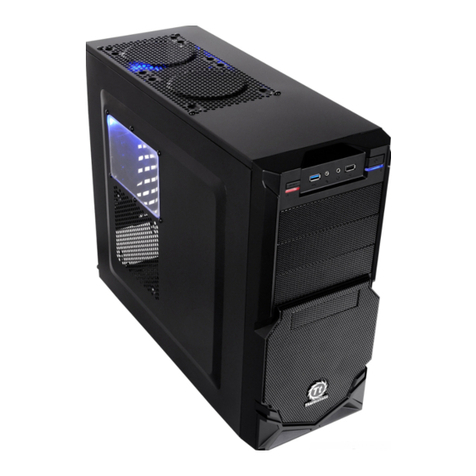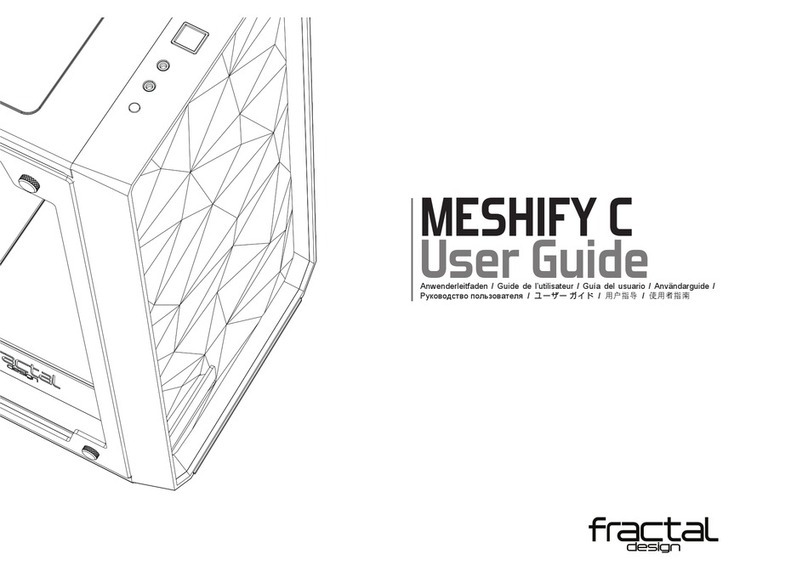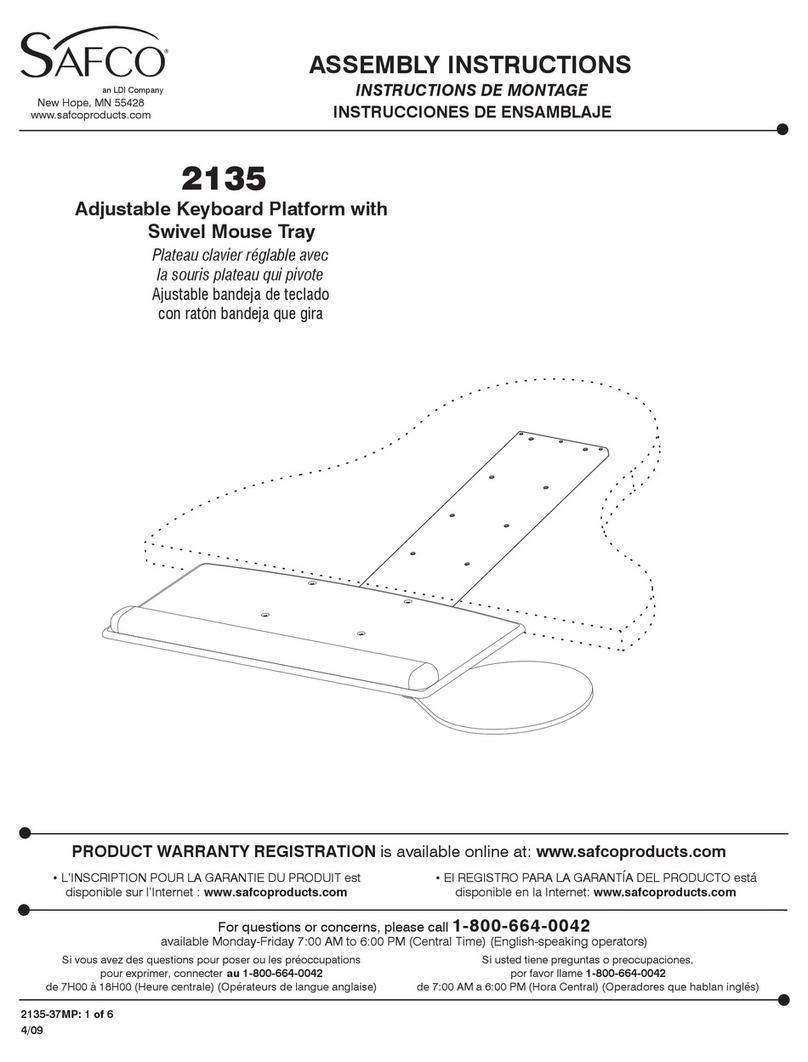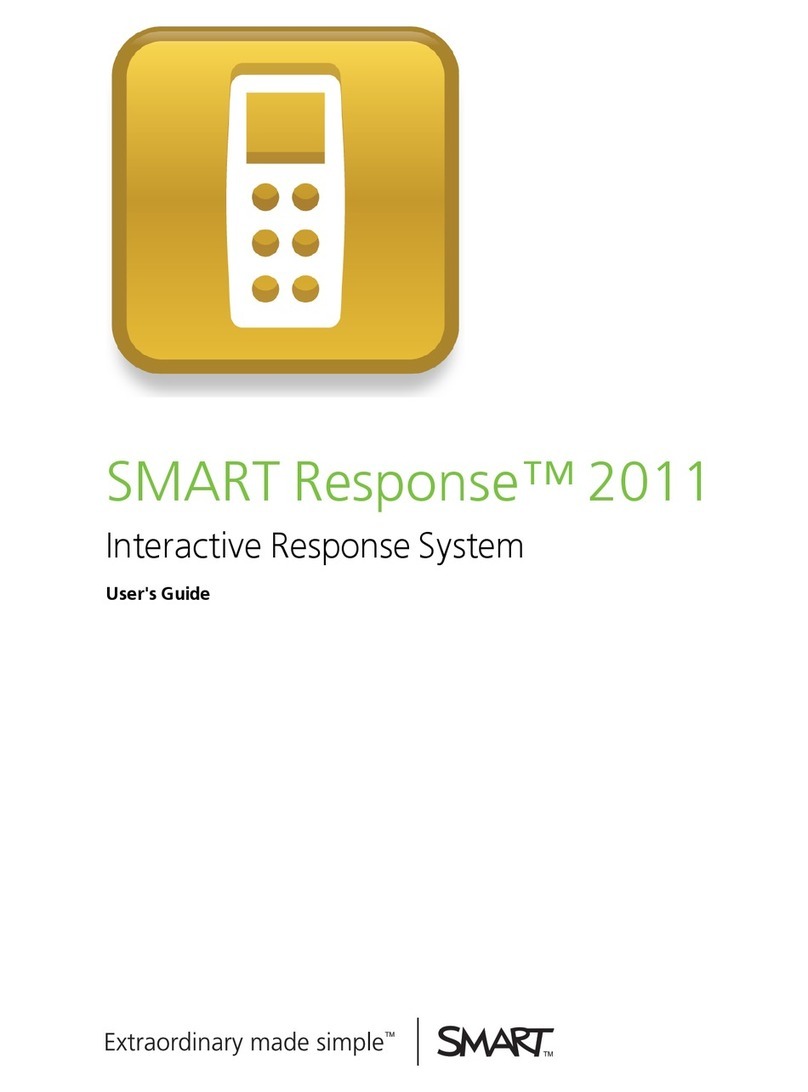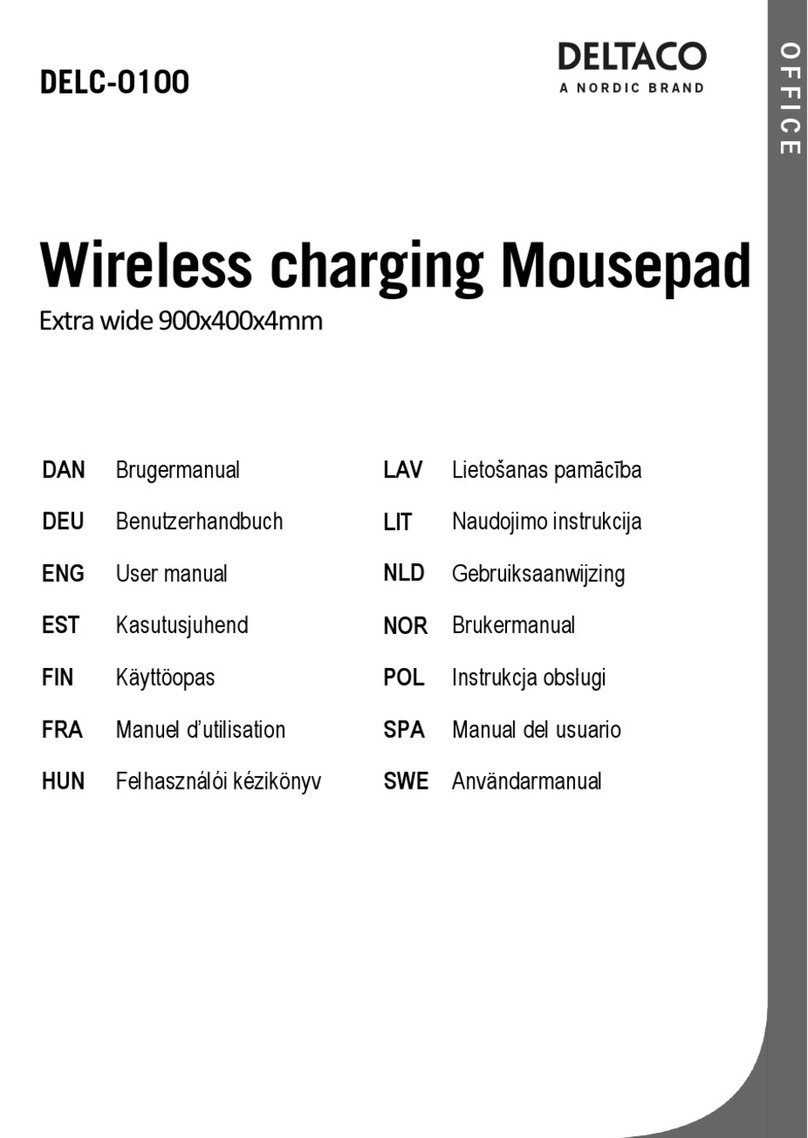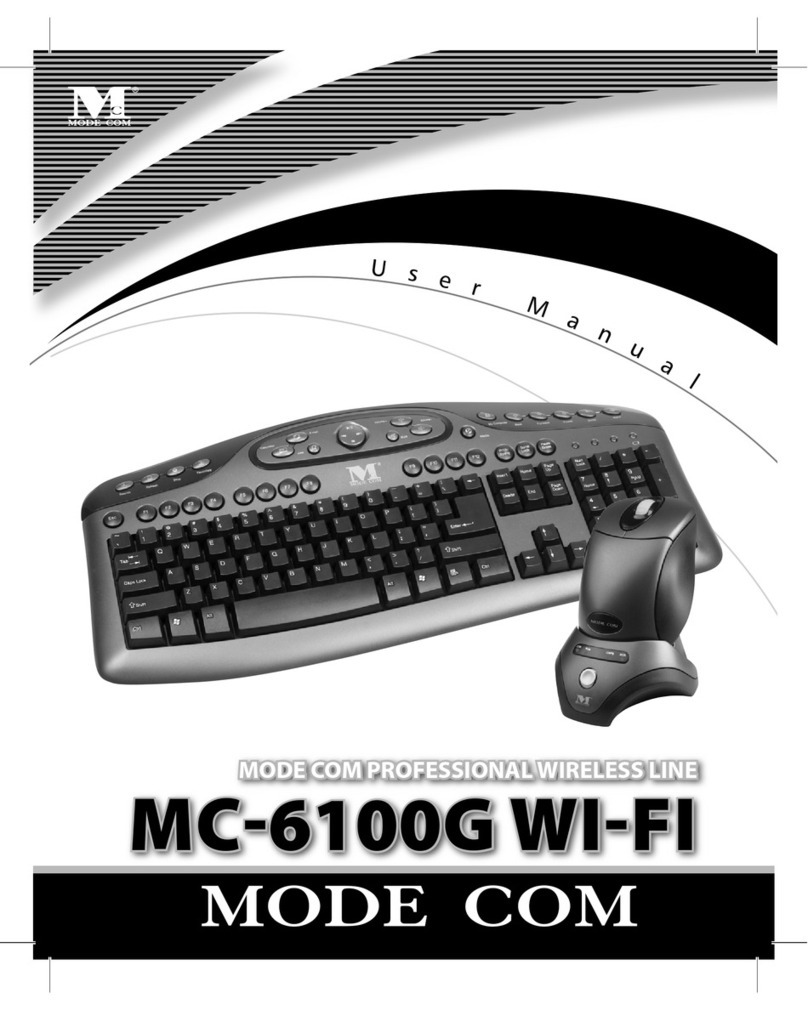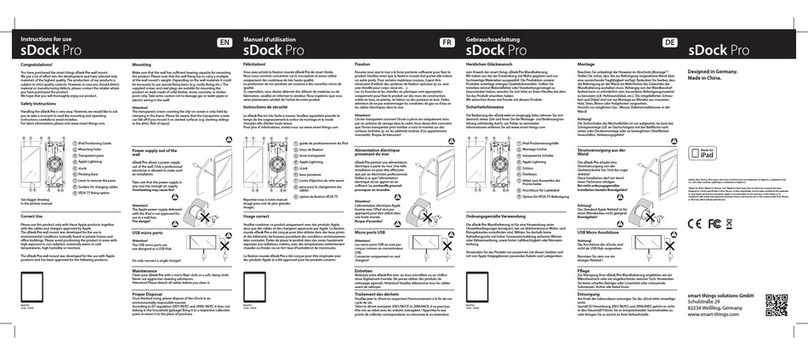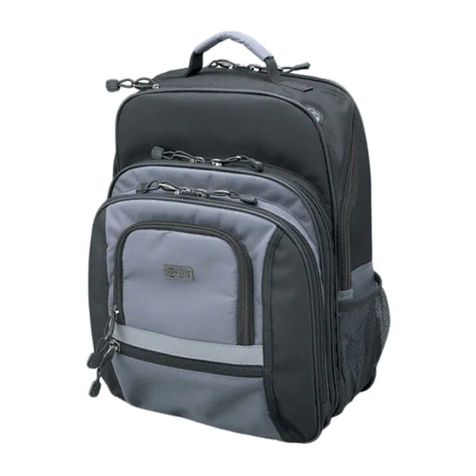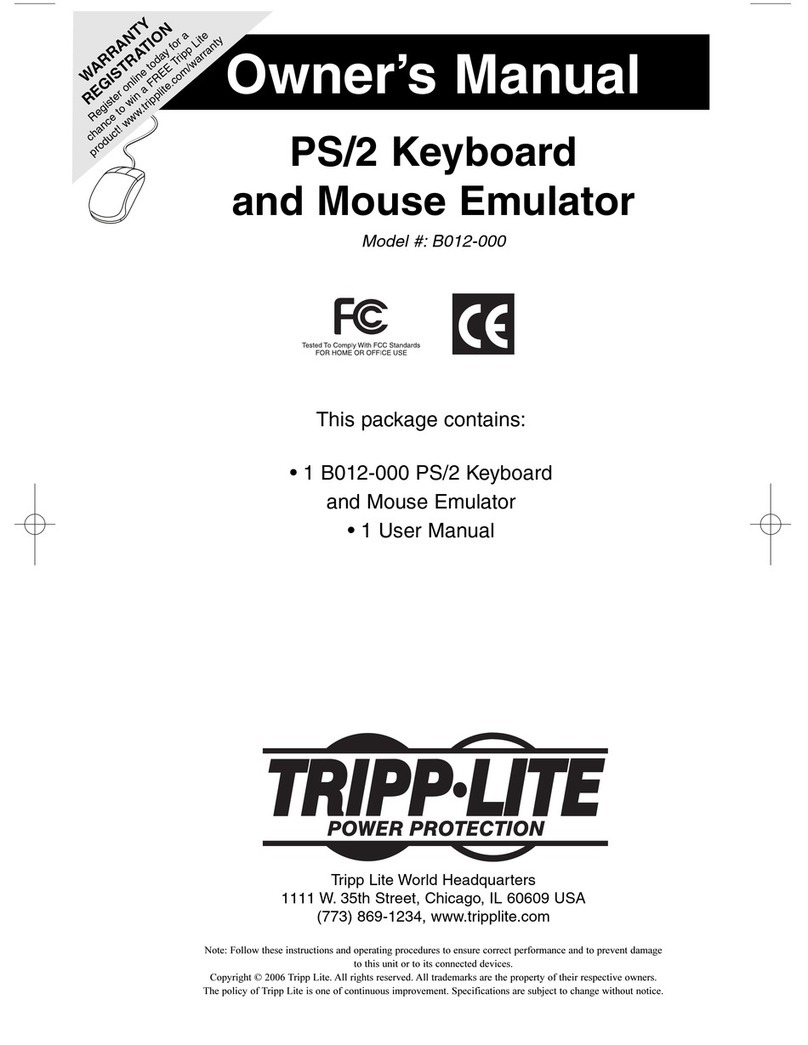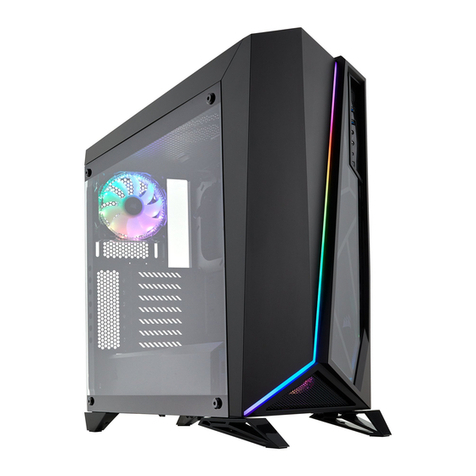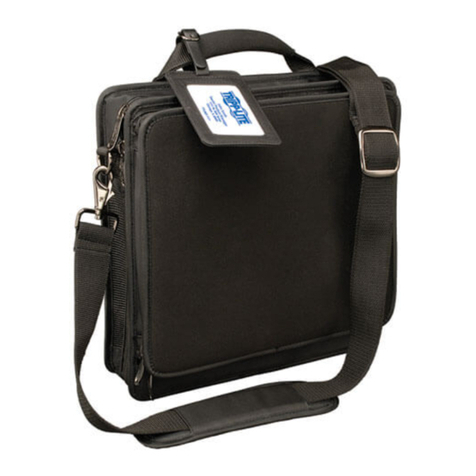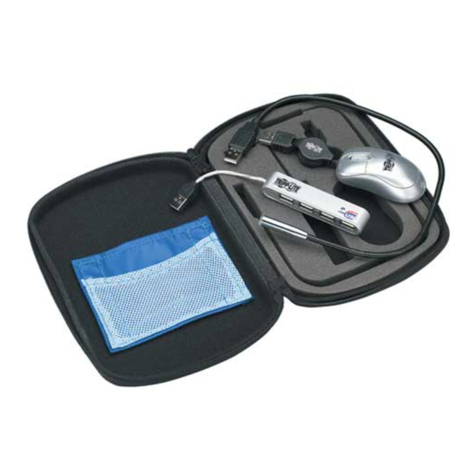SWR SWP-ASR300 Series User manual

- 1 -
Charm Faith Autosystem Instrument
S
SW
WP
P-
-A
AS
SR
R
s
se
er
ri
ie
es
s
P
Pa
ap
pe
er
rl
le
es
ss
s
r
re
ec
co
or
rd
de
er
r
O
Op
pe
er
ra
at
ti
in
ng
g
m
ma
an
nu
ua
al
l
香
香
香港
港
港昌
昌
昌晖
晖
晖自
自
自动
动
动化
化
化系
系
系统
统
统有
有
有限
限
限公
公
公司
司
司
C
C
CH
H
HA
A
AR
R
RM
M
M
F
F
FA
A
AI
I
IT
T
TH
H
H
A
A
AU
U
UT
T
TO
O
OS
S
SY
Y
YS
S
ST
T
TE
E
EM
M
MC
C
CO
O
O.
.
.,
,
,L
L
LT
T
TD
D
D.
.
.
Swp
®
is CharmFaith Autosystem trade mark.
Charm Faith instrument copyright.
5~~

- 2 -
Shipping detail
Dear customer,
Appreciate you use Charm Faith SWP-ASR300 series paperless recorder. Please check the
shipping items included. Any issue, please contact our service center or distributor. We will great to
provide our best service!
Shipping items Qty
SWP-ASR300 paperless recorder 1
SWP-ASR300 user manual 1
Installation fixing 2
Power filter modutor 1
Product certificate card 1
Product warranty card 1
Overview
In order to correctly use SWP-ASR series, please read carefully this operating manual. For safety
reason, grounding is very importance. After finishing the installation, confirmed that power lines have
connected correctly otherwise the instrument outer covering might be with approximately 110 V.
Communication ports connection should be under power off condition.
Please do not disassemble the instrument. Contact company service center or the local business
agent if the instrument is breakdown. Please maintain the instrument surface clean with soft dry
cloth. The gasoline or alcohol and any organic solvent are not allowed for surface cleaning.

- 3 -
I
In
nd
de
ex
x
1.ART RECORDER .............................................................................................- 5 -
1.1 FEATURES...............................................................................................- 5 -
1.2 DATA SAVING MODE ..............................................................................- 7 -
1
1.
.2
2.
.1
1
I
In
nt
te
er
rn
na
al
l
d
da
at
ta
a
s
sa
av
vi
in
ng
g..........................................................................................- 7 -
1
1.
.2
2.
.2
2
D
Da
at
ta
a
t
tr
ra
an
ns
sf
fe
er
rr
ri
in
ng
g..............................................................................................- 7 -
1.3 ALARM....................................................................................................- 7 -
1
1.
.3
3.
.1
1
A
Al
la
ar
rm
m
m
mo
od
de
es
s
(
(R
Re
ef
fe
er
r
t
to
o
t
th
he
e
f
fo
ol
ll
lo
ow
wi
in
ng
g
t
ta
ab
bl
le
e,
,
6
6
o
of
f
a
al
la
ar
rm
m
m
mo
od
de
es
s)
)..............................- 7 -
1
1.
.3
3.
.2
2
A
Al
la
ar
rm
m
m
ma
ar
rk
ks
s ....................................................................................................- 8 -
1
1.
.3
3.
.3
3
A
Al
la
ar
rm
m
o
ou
ut
tp
pu
ut
ts
s..................................................................................................- 8 -
2. INSTALLATION AND WIRING ......................................................................- 9 -
2.1 ATTENTION: ...............................................................................................- 9 -
2
2.
.1
1.
.1
1
A
At
tt
te
en
nt
ti
io
on
n
i
in
n
i
in
ns
st
tr
ru
um
me
en
nt
t
u
us
si
in
ng
g ................................................................................- 9 -
2.2 INSTALLATION...........................................................................................- 9 -
2
2.
.2
2.
.1
1
E
En
nv
vi
ir
ro
om
me
en
nt
t..........................................................................................................- 9 -
2
2.
.2
2.
.2
2
I
In
ns
st
ta
al
ll
l
D
Di
ia
am
me
em
ms
si
io
on
n
–
–
A
AS
SR
R1
10
00
0
(
(u
un
ni
it
t:
:
m
mm
m)
)...............................................................- 9 -
2
2.
.2
2.
.3
3
I
In
ns
st
ta
al
ll
la
at
ti
io
on
n
(
(F
Fi
ig
gu
ur
re
e
2
2-
-2
2-
-3
3)
)...................................................................................- 10 -
2
2.
.2
2.
.4
4
T
Te
er
rm
mi
in
na
al
l
d
de
es
sc
cr
ri
ip
pt
ti
io
on
n ...........................................................................................- 10 -
2
2.
.2
2.
.4
4.
.1
1
T
Te
er
rm
mi
in
na
al
l..............................................................................................- 10 -
2
2.
.2
2.
.4
4.
.2
2
A
An
na
al
lo
og
g
i
in
np
pu
ut
t
w
wi
ir
ri
in
ng
g
d
di
ia
ag
gr
ra
am
m..................................................................- 11 -
2
2.
.2
2.
.4
4.
.3
3
M
Mu
ul
lt
ti
ip
pl
le
e
t
te
er
rm
mi
in
na
al
l
d
di
ia
ag
gr
ra
am
mj
j.....................................................................- 11 -
2
2.
.2
2.
.4
4.
.4
4
D
DC
C-
-2
24
4V
V
p
po
ow
we
er
r
o
ou
ut
tp
pu
ut
t
d
di
ia
ag
gr
ra
am
m ..............................................................- 11 -
2
2.
.2
2.
.4
4.
.5
5
R
Re
el
la
ay
y
o
ou
ut
tp
pu
ut
t
t
te
er
rm
mi
in
na
al
l
w
wi
ir
ri
in
ng
g
d
di
ia
ag
gr
ra
am
m.....................................................- 11 -
2
2.
.2
2.
.5
5
W
Wi
ir
ri
in
ng
g
d
de
es
sc
cr
ri
ip
pt
ti
io
on
n ..............................................................................................- 12 -
2
2.
.2
2.
.5
5.
.1
1
P
Po
ow
we
er
r
C
Co
on
nn
ne
ec
ct
ti
io
on
n ................................................................................- 12 -
2
2.
.2
2.
.5
5.
.2
2
I
In
np
pu
ut
t
s
si
ig
gn
na
al
l
c
co
on
nn
ne
ec
ct
ti
io
on
n.........................................................................- 12 -
2
2.
.2
2.
.5
5.
.3
3
C
Co
om
mm
mu
un
ni
ic
ca
at
ti
io
on
n
w
wi
ir
re
e
c
co
on
nn
ne
ec
ct
ti
io
on
n ............................................................- 13 -
3
3
O
OP
PE
ER
RA
AT
TI
IN
NG
G.................................................................................................- 15 -
3
3.
.1
1
P
PO
OW
WE
ER
R
O
ON
N.......................................................................................................- 15 -
3
3.
.2
2
K
KE
EY
Y
P
PA
AD
DS
S
O
OP
PE
ER
RA
AT
TI
IN
NG
G..........................................................................................- 15 -
3
3.
.2
2.
.1
1
D
Di
is
sp
pl
la
ay
y
m
mo
od
de
es
s ...................................................................................................- 16 -
3
3.
.2
2.
.2
2
C
Cu
ur
rv
ve
e
a
an
nd
d
r
re
ea
al
l
t
ti
im
me
e
d
da
at
ta
a
p
pr
ri
in
nt
ti
in
ng
g.........................................................................- 16 -
3
3.
.2
2.
.3
3
C
Co
on
nf
fi
ig
gu
ur
ra
at
ti
io
on
n
s
se
et
tt
ti
in
ng
g..........................................................................................- 17 -
3
3.
.2
2.
.4
4
T
Ti
im
me
e
D
DI
IV
V...........................................................................................................- 17 -
3.2.5 Curve amplitude.................................................................................................- 17 -
3
3.
.2
2.
.6
6
D
Di
is
sp
pl
la
ay
y
m
me
en
nu
u.....................................................................................................- 18 -

- 4 -
3
3.
.2
2.
.7
7
A
Al
la
ar
rm
m................................................................................................................- 18 -
3
3.
.2
2.
.8
8
U
US
SB
B
d
da
at
ta
a
t
tr
ra
an
ns
sf
fe
er
rr
ri
in
ng
g .........................................................................................- 18 -
3
3.
.2
2.
.9
9
S
Sc
cr
re
ee
en
n
l
lo
oc
ck
k........................................................................................................- 19 -
3
3.
.3
3
I
IN
NS
ST
TR
RU
UM
ME
EN
NT
T
S
ST
TA
AT
TU
US
S
D
DI
IS
SP
PL
LA
AY
Y
S
SU
UM
MM
MA
AR
RY
Y...................................................................- 19 -
4
4
O
OP
PE
ER
RA
AT
TI
IN
NG
G
D
DE
ES
SC
CR
RI
IP
PT
TI
IO
ON
N .........................................................................- 20 -
4.1 TREND............................................................................................................- 20 -
4
4.
.2
2
A
AL
LA
AR
RM
M
I
IN
NF
FO
OR
RM
MA
AT
TI
IO
ON
N..........................................................................................- 22 -
4
4.
.3
3
S
SI
IN
NG
GL
LE
E
C
CH
HA
AN
NN
NE
EL
L...............................................................................................- 22 -
4
4.
.4
4
D
DU
UA
AL
L
C
CH
HA
AN
NN
NE
EL
LS
S................................................................................................- 22 -
4
4.
.5
5
W
WH
HO
OL
LE
E
C
CH
HA
AN
NN
NE
EL
LS
S..............................................................................................- 23 -
4.6 ALARM LOG ......................................................................................................- 23 -
4
4.
.7
7
B
BA
AR
RG
GR
RA
AP
PH
H
M
MO
OD
DE
E...............................................................................................- 23 -
4
4.
.8
8
P
PO
OW
WE
ER
R
F
FA
AI
IL
LU
UR
RE
E
L
LO
OG
G...........................................................................................- 24 -
4
4.
.9
9
O
OP
PE
ER
RA
AT
TI
IN
NG
G
D
DE
ES
SC
CR
RI
IP
PT
TI
IO
ON
N:
:
(
(G
GE
EN
NE
ER
RA
AL
L
O
OP
PE
ER
RA
AT
TI
IN
NG
G)
)......................................................- 25 -
4
4.
.1
10
0
H
HI
IS
ST
TO
OR
RY
Y
R
RE
EC
CA
AL
LL
L..............................................................................................- 26 -
4
4.
.1
11
1
I
IN
NS
ST
TR
RU
UM
ME
EN
NT
T
C
CO
ON
NF
FI
IG
GU
UR
RA
AT
TI
IO
ON
N.............................................................................- 28 -
5
5
C
CO
ON
NF
FI
IG
GU
UR
RA
AT
TI
IO
ON
N
S
SE
ET
TT
TI
IN
NG
G.........................................................................- 28 -
5
5.
.1
1
G
GO
O
T
TO
O
C
CO
ON
NF
FI
IG
GU
UR
RA
AT
TI
IO
ON
N
S
SE
ET
TT
TI
IN
NG
G............................................................................- 28 -
5
5.
.2
2
C
CO
ON
NF
FI
IG
GU
UR
RA
AT
TI
IO
ON
NS
S
A
AN
ND
D
P
PA
AR
RA
AM
ME
ET
TE
ER
RS
S.......................................................................- 29 -
5
5.
.2
2.
.1
1
S
Sy
ys
st
te
em
m
c
co
on
nf
fi
ig
gu
ur
ra
at
ti
io
on
n..........................................................................................- 29 -
5
5.
.2
2.
.2
2
C
Ch
ha
an
nn
ne
el
l
c
co
on
nf
fi
ig
gu
ur
ra
at
ti
io
on
n.........................................................................................- 30 -
5
5.
.2
2.
.3
3
D
Di
is
sp
pl
la
ay
y
c
co
on
nf
fi
ig
gu
ur
ra
at
ti
io
on
n..........................................................................................- 33 -
5
5.
.2
2.
.4
4
C
Co
om
m
p
po
or
rt
t
s
se
et
tt
ti
in
ng
g................................................................................................- 33 -
5
5.
.2
2.
.5
5
P
Pr
ri
in
nt
ti
in
ng
g
c
co
on
nf
fi
ig
gu
ur
ra
at
ti
io
on
n .........................................................................................- 33 -
5
5.
.2
2.
.6
6
P
PU
UR
R
m
ma
an
na
ag
ge
em
me
en
nt
t ..............................................................................................- 34 -
5
5.
.2
2.
.7
7
Analog output
c
co
on
nf
fi
ig
gu
ur
ra
at
ti
io
on
n................................................................................- 36 -
5
5.
.2
2.
.8
8
U
US
SB
B
C
Co
on
nf
fi
ig
gu
ur
ra
at
ti
io
on
n..............................................................................................- 37 -
6
6
C
CO
OM
MM
MU
UN
NI
IC
CA
AT
TI
IO
ON
N.......................................................................................
- 38 -
7
7.
.
M
MO
OD
DE
EL
L
A
AN
ND
D
S
SU
UF
FF
FI
IX
X
C
CO
OD
DE
E
–
–
O
OR
RD
DE
ER
RI
IN
NG
G
I
IN
NF
FO
OR
RM
MA
AT
TI
IO
ON
N ..........................- 39 -
8
8
M
MA
AI
IN
NT
TA
AI
IN
NA
AN
NC
CE
E...........................................................................................- 40 -
8
8.
.1
1
C
CO
ON
NN
NE
EC
CT
TI
IO
ON
N
I
IN
NS
SP
PE
EC
CT
TI
IO
ON
N....................................................................................- 40 -
8
8.
.2
2
O
OP
PE
ER
RA
AT
TI
IN
NG
G
E
EN
NV
VI
IR
RO
ON
NM
ME
EN
NT
T...................................................................................- 40 -
8
8.
.3
3
R
RE
EP
PL
LA
AC
CE
E
S
SP
PO
OI
IL
LT
T
F
FU
US
SE
E.........................................................................................- 40 -
8
8.
.4
4
C
CA
AL
LI
IB
BR
RA
AT
TI
IO
ON
N....................................................................................................- 41 -
8
8.
.5
5
C
CH
HA
AN
NG
GE
E
B
BA
AT
TT
TE
ER
RY
Y...............................................................................................- 41 -

- 5 -
1.art Recorder
1.1 Features
1.1.1 Input & Output
Input signal
Analog Input
T.C: B、S、K、E、T、J、W
RTD: PT100、CU50
DC: 0-5V, 1-5V, 0-100mV, 0-20mV, 4-20mA
Pulse Input
Top of Form
Rectangular, sine or triangular wave:
Amplidute Range>= 4V, frequency 0 - 15KHz Bottom of Form
Output Signal
Analog output
DC Current: 0-10mA, 4-20mA
DC Voltage: 0-5V, 1-5V
Relay contact
rating
Relay: 220V/3A or DC 24V/5A
SCR: 400V/0.5A
SSR: 6-9V/0.05A
Power Output DC 24V/30mA
1.1.2 Performance
Accuracy 0.5%FS±1digit or 0.2%FS±1digit (ignored level: 0-25.5%FS)
Range -9999-99999
Sampling Period 0.25 second
Interrecord Time 1 second - 4 minutes
Display mode High resolution, brightness adjustable, wide view angle and bright TFT color
LCD (320x234) with saving screen (3.6” for ASR300 series)
Parameters setting By Key nods or upper linking computer setting. Security lock function is
available
Alarm
4 alarm points per channel are available. Upper/lower alarm, rate-of-change
and differential limit; Alarm output delay, alarm delay high to low, external
connection sound available, max 12 latest alarm messages are saved per
channel.
Communication port
RS-232,RS-485: Buad rate 1200 – 115200 bps.
Control action Hysteresis ON/OFF relay output (AC220V/3A) is selectable.
Printer
TP
μ
P-A40 micro printer is recommended.
Operating
environment
Ambient Temperature -15 — 60 ℃, Humidity ≤ 85%RH
Supply Voltage
95 - 260VAC 50-60Hz
Power consume ≤ 20W
Weight Approx 2000 g (ASR300 series)

- 6 -
1.1.3 M
Me
em
mo
oe
ey
y
(
(F
Fl
la
as
sh
h)
)
c
ca
ap
pa
ac
ci
it
ty
y
v
vs
s
c
ch
ha
an
nn
ne
el
l
n
nu
um
mb
be
er
r,
,
i
in
nt
te
er
rr
re
ec
co
or
rd
d
t
ti
im
me
e
a
an
nd
d
a
ap
pp
pr
ro
ox
x
r
re
ec
co
or
rd
di
in
ng
g
d
da
at
te
e
:
:
Capacity(Mbit)Interrecord time (S) Channel Number Approx recording date
32
(Default
configuration)
10
1
683
2
341
4
170
8
82
240
1
16401
2
8200
4
4100
8
1984
64
(Extened)
10
1
1594
2
797
4
398
8 192
240
1
38037
2
19134
4 9567
8
4629
128
(Extend)
10
1
3415
2
1705
4
850
8
410
240
1
82005
2
41000
4
20500
8
9920
I
In
np
pu
ut
t
t
ty
yp
pe
e
a
an
nd
d
m
me
ea
as
su
ur
ri
in
ng
g
r
ra
an
ng
ge
e:
Input Mode Measuring range Input Mode Measuring range
VDC
0~20mV -9999~99999
TC
S -50.0~ 1769.0℃
0~100mV -9999~99999 B -50.0~ 1820.0℃
0~5V -9999~99999 K -50.0~ 1372.0℃
1~5V -9999~99999 E -50.0~ 1000.0℃
IDC 0~10mA -9999~99999 J -50.0~ 1200.0℃
4~20mA -9999~99999 T -199.90~ 320.00℃
DI
On/off on/off Wre 3-25 0.0~ 2300.0℃
DCV input
(TTL)
OFF:2.4V below
ON:2.4V above RTD
Pt100 -200.0~ 850.0℃
Cu50 50.00~ 150.00℃

- 7 -
1.2 Data saving mode
1
1.
.2
2.
.1
1
I
In
nt
te
er
rn
na
al
l
d
da
at
ta
a
s
sa
av
vi
in
ng
g
Nand Flash is used in the recorder. No battery is needed. It is safety for power incidently failure.)
No distortion from recordered data as the data was saved as 16 bits. Figure 1-2-1
1
1.
.2
2.
.2
2
D
Da
at
ta
a
t
tr
ra
an
ns
sf
fe
er
rr
ri
in
ng
g
Normal U drive (2.0 versions) is used for data transferring.
1.3 Alarm
1
1.
.3
3.
.1
1
A
Al
la
ar
rm
m
m
mo
od
de
es
s
(
(R
Re
ef
fe
er
r
t
to
o
t
th
he
e
f
fo
ol
ll
lo
ow
wi
in
ng
g
t
ta
ab
bl
le
e,
,
6
6
o
of
f
a
al
la
ar
rm
m
m
mo
od
de
es
s)
)
Upper limit: LED turns to red and “H”
mark is display besides real time reading
when alarm activated. It will return to
green and “H” mark disappears after alarm
relieving.
Figure 1-3-1
Alarm value
Measured value
Hysteresis
Alarm output ON
30 minuts (30 pixes)
1 minute (1 pix)
Max
min
Figure 1-2-1

- 8 -
Lower limit: LED turns to red and “L”
mark is display besides real time value
when alarm activated. It will return to
green and “L” mark disappears after alarm
relieving.
Figure 1-3-2
Rate-of-change upper limit
When the rising rate of change is great to
the designated value, the alarm activated.
Alarm mark “R” display and value will turn
to red. Value will return to green and “R”
disappears after alarm relieving
Figure 1-3-3
Rate-of-change lower limit: When
the droping rate of change is slight to the
designated value, the alarm activated.
Alarm mark “r” display and value will turn
to red. Value will return to green and “r”
disappears after alarm relieving.
Figure 1-3-4
Differential upper limit: When value
is higher than the user setting’s, the alarm
activated. Value will turn to red and “h”
mark will display. Value will return to green
and “h” will disappear after alarm relieving.
The setting value may be other channel’s
output or user designated. Figure 1-3-5
Differential lower limit: When value
is lower than the user setting, the alarm
activated. Value will turn to red and “l”
mark will display. Value will return to green
and “l” will disappear after alarm relieving.
The setting value may be other channel’s
output or user designated. Figure 1-3-6
1
1.
.3
3.
.2
2
A
Al
la
ar
rm
m
m
ma
ar
rk
ks
s
To confirm alarm, press “ “, the real time measuring value will return to normal and alarm
mark will disappear.
1
1.
.3
3.
.3
3
A
Al
la
ar
rm
m
o
ou
ut
tp
pu
ut
ts
s
Sound or signal alarm is available. User can select the relays output and connection is as below.
ESC
Alarm value
Measured value
Alarm output ON
Hysteresis
Measured value
Tmax
Tmin
Time
t 1
t 2
Rising rate
Interval
Measured value
Tmin
Time
t 1
t 2
Droping rate
Interval
Tmax
Alarm output ON
Differential
Measured value
Hysteresis
Contrast
value
Differential= | Measured value – contrast value|
Differential
Hysteresis
Measured value
Alarm output ON
Contrast

- 9 -
2. Installation and wiring
2.1 Attention:
2
2.
.1
1.
.1
1
A
At
tt
te
en
nt
ti
io
on
n
i
in
n
i
in
ns
st
tr
ru
um
me
en
nt
t
u
us
si
in
ng
g
There are many plastic parts in this instrument panel. Please do use dry soft cloth for cleaning.
Solvents are not allowed for cleaning. Please keep the LCD screen away from any sharpen goods.
Please keep any mechanical impact away during the instrument working. It might cause internal
component damage or system breaks down. Turn off the power for any maintenance if necessary.
Please contact our customer service department or local dealer if any unusual sound, belches smoke or
unusual smell was found.
2.2 Installation
2
2.
.2
2.
.1
1
E
En
nv
vi
ir
ro
om
me
en
nt
t
To ensure the instruments be normal working, non-strong interference control panel is strongly
recommended to be installed on and the panel steel plate thickness should not be lower than 4mm.
The instruments operating ambient temperature: -15℃- 60℃, humidity: 10% - 85% (without
condensation) is recommended.
Please keep away from the direct sunlight, the multi-steam, the multi-caustic gases and the
source of the electromagnetism environment.
2
2.
.2
2.
.2
2
I
In
ns
st
ta
al
ll
l
D
Di
ia
am
me
em
ms
si
io
on
n
–
–
A
AS
SR
R1
10
00
0
(
(u
un
ni
it
t:
:
m
mm
m)
)
Figur 2-2-2
Side view
76+1
0
151
+1
0
Front view
80
160
110
Install dimension Back view

- 10 -
2
2.
.2
2.
.3
3
I
In
ns
st
ta
al
ll
la
at
ti
io
on
n
(
(F
Fi
ig
gu
ur
re
e
2
2-
-2
2-
-3
3)
)
2
2.
.2
2.
.4
4
T
Te
er
rm
mi
in
na
al
l
d
de
es
sc
cr
ri
ip
pt
ti
io
on
n
Terminal arrangements are descripted on Figure 2-2-4-A and Figure 2-2-4-B.
Signal input / Control output:
Input/Output
terminal symbol Description
L、N、G Power terminal and Grounding
A、B、C Analog input terminal,Max 8 channels (ASR300 )
P+、P-DC24V Power output terminals, Max3,60mA each,for converter power
supply
J Relay output terminals, Total 6,relay: 250VAC,3A
2
2.
.2
2.
.4
4.
.1
1
T
Te
er
rm
mi
in
na
al
l
Figure 2-2-4-1
Terminal 2
23 21 20 17 15 13 11 9 7 5 3 1
24 22 19 18 16 14 12 10 8 6 4 2
47 45 43 41 39 37 35 33 31 29 27 25
48 46 44 42 40 38 36 34 32 30 28 26
Terminal 1
Figure 2-2-3
Clamp strip
Tightening screw
#1
Face out
Thickness
≥
4mm
#2
Clamp strip
Thickness
≥
4mm

- 11 -
2
2.
.2
2.
.4
4.
.2
2
A
An
na
al
lo
og
g
i
in
np
pu
ut
t
w
wi
ir
ri
in
ng
g
d
di
ia
ag
gr
ra
am
m
2
2.
.2
2.
.4
4.
.3
3
M
Mu
ul
lt
ti
ip
pl
le
e
t
te
er
rm
mi
in
na
al
l
d
di
ia
ag
gr
ra
am
m
2
2.
.2
2.
.4
4.
.4
4
D
DC
C-
-2
24
4V
V
p
po
ow
we
er
r
o
ou
ut
tp
pu
ut
t
d
di
ia
ag
gr
ra
am
m
2
2.
.2
2.
.4
4.
.5
5
R
Re
el
la
ay
y
o
ou
ut
tp
pu
ut
t
t
te
er
rm
mi
in
na
al
l
w
wi
ir
ri
in
ng
g
d
di
ia
ag
gr
ra
am
m
Figure 2-2-4-2
Terminal 1
#1
A B C
#3
A B C
#5
A B C
#7
A B C
#2
A B C
#4
A B C
#6
A B C
#8
A B C
Maximum 12 channels input will be available,
Take No.1 input signal for example as below,similar to others
Figure 2-2-4-3
Termina2
P-
P+
#1
Figure 2-2-4-4
Termina 2
#1
J1 J1
#3
组
J3 J3
#5
J5 J5
J1 J1
#2
J2 J2
#4
J4 J4
#6
J6 J6
Figure 2-2-4-5
RS-232
Termina 2
Communication connection mode refers to 2.2.5

- 12 -
2
2.
.2
2.
.5
5
W
Wi
ir
ri
in
ng
g
d
de
es
sc
cr
ri
ip
pt
ti
io
on
n
2
2.
.2
2.
.5
5.
.1
1
P
Po
ow
we
er
r
C
Co
on
nn
ne
ec
ct
ti
io
on
n
1. (Line), N (Nuture), G (Ground)
2. Before wiring inputs ensure power supply is correct.
3. Input wiring must be under power off condition.
2
2.
.2
2.
.5
5.
.2
2
I
In
np
pu
ut
t
s
si
ig
gn
na
al
l
c
co
on
nn
ne
ec
ct
ti
io
on
n
Analog input signal connection and wiring are shown as Figure 2-2-5-2A and 2-2-5-2B,
Converter connection is shown as Figure 2-2-5-2C
-remove terminal cover
-For your convenient, wiring should be from low to high
-Connecting all cable lugs with power off condition
-Recover it after completing
The following wiring is an example for single loop input. Other each is similar.
Power connecting terminal
AC90~260V
50/60Hz
G N L
Termina 2
Plastic cable lugs (4mm)
Figure 2-2-5-2A Analog input diagram
Current input
Current
Voltage output
Voltage

- 13 -
2
2.
.2
2.
.5
5.
.3
3
C
Co
om
mm
mu
un
ni
ic
ca
at
ti
io
on
n
w
wi
ir
re
e
c
co
on
nn
ne
ec
ct
ti
io
on
n
1、RS-232C connection
The RS-232C port is at the back of the instrument.(Figure 2-2-5-3-1A and 2-2-5-3-1B), It can be
used for both data transferring with computer and serial printer as well.
The transmission line should use the shielded twisted pair, the length should be less 10 meters.
Figure 2-2-5-2B Frequency input、transmitter wiring diagram
Frequency input transmitter wiring diagram
RTD input
PT100
T.C input
Thermal Couple
Figure 2-2-5-2C Transmitter wiring diagram
3 wires transmitter 4 wires transmitter
2 wires transmitter
Transmitter
Transmitter
Transmitter
Figure 2-2-5-3-1A RS-232C com between computer and instrument
Black
44
46
48
Yellow
Red
Black
Red
Yellow
9 pins female socket
Computer side
9 pins female
socket
Instrument side

- 14 -
2、RS-485 Com connection
By using RS-485 communications with the computer, communication converter (RS232 to
RS485) is needed. See Figure 2-2-5-3-2A The RS-485 transmission line should use the shielded
twisted pair. When the baudrate is up to 19200bps, the maximum transmission line will be less
than 1000 meters. In order to reduce the signaling and the echo trouble, please install 120 ohm
terminal resistances in the both sides of transmission line. (e.g. 2-2-5-3-2B)
Figure 2-2-5-3-2A 485 Com connection diagram
Com converter
120ΩTerminal resistor 120Ω Terminal resistor
Figure 2-2-5-3B RS-232C com between computer and instrument
44
46
48
Black
Yellow
Red
Black
Red
Yellow
9 pins fe
male socket
Computer side
9 pins female socket
Instrument side
Figure2-2-5-3-2B Com convertor to instrument RS485 connection
44
46
Red
Blue
B
lue
Red
9
-pins female socket
Communication converter side
9 pins female
socket
Instrument side

- 15 -
3
3
O
Op
pe
er
ra
at
ti
in
ng
g
3
3.
.1
1
P
Po
ow
we
er
r
o
on
n
Turn on the power with the grounding. (Default configuration is 220VAC). (First time power on is
suggested that do not connect any input). After 4 Seconds initialization, below status will be seen.
3
3.
.2
2
K
Ke
ey
y
p
pa
ad
ds
s
o
op
pe
er
ra
at
ti
in
ng
g
There are 14 function kays as 3-1 shown.
Channel selection Left/Right shift.
Change display modes.
For confirming the function or selecting menu;
Escape from the current operation;
Press“SET”+“ " goto instrument configuration setting;
ESC
SET
ENT
Figure 3-2
Figure 3-1

- 16 -
“F1” is a special function key. It will combine with others keys and perform some
special functions. It will descript later;
“F2” is another special function key. It will combine with others keys and perform
some special functions. It will descript later;
“Page Down” key is used for channel page (group) display switching;
switch display.when locking,LCD right up site will show the locking mark. Unlock status, the
display will be back to main after non-key touching in setting time;
display printer setting window and used for channels real time data printing.
In the main and history recall page, 4 grades of time/div can be selected;
It will enter the help screen.
3
3.
.2
2.
.1
1
D
Di
is
sp
pl
la
ay
y
m
mo
od
de
es
s
- As Figure 3-2-1 shown, Press“ ”to select the display modes.
- Press “ “ and select by manu.
3
3.
.2
2.
.2
2
C
Cu
ur
rv
ve
e
a
an
nd
d
r
re
ea
al
l
t
ti
im
me
e
d
da
at
ta
a
p
pr
ri
in
nt
ti
in
ng
g
Press “ ”, you can see printing setting. As Figure 3-2-2 shown, you can select related CH of
curve or data with start and end time for printing. Users can also press “ ”+“ ”to print all
channels data. The communicating status will see and alternate twinkling.
PRINT
PRINT
F1
ENT
PD
F1
F2
F3
+
F3
+
F3
+
F1
+
Figure
3-2-1
Figure 3-2-2

- 17 -
3
3.
.2
2.
.3
3
C
Co
on
nf
fi
ig
gu
ur
ra
at
ti
io
on
n
s
se
et
tt
ti
in
ng
g
Press“ ”+“ ”, will see “PUR password”as Figure 3-2-3. Press “ ”shift forward and
press“ ”shift back ward. Press“ ”to change user’s name and “ ” or “ ”to
change the password.
3
3.
.2
2.
.4
4
T
Ti
im
me
e
D
DI
IV
V
Under trend, single CH and History recall display, press“ ”will change display curve time
division rate. Refer to Figure 3-2-4.
3.2.5 Curve amplitude
Under trend, press“ ”to trend, Group curve range setting will be 0-100%. It can be
set to e.g. 20 – 80% accordingly.
ENT
SET
DIV
ENT
Figure 3-2-3
Figure 3-2-5
Curve upper limit is 100%
Curve lower limit is 0%
Figure 3-2-4A
DIV = Interrecord time* Time indice
Figure 3-2-4B
DIV
=Interrecord time* Time indice

- 18 -
3
3.
.2
2.
.6
6
D
Di
is
sp
pl
la
ay
y
m
me
en
nu
u
Under system display, press“ENT”goto display menu. There are total 3 levels menu as shows in
Figure 3-2-6. “ > ”mark is showing that there are more option in the menu of the following levels.
Note: For some new revsion recorder, once the U drive inset into the recorder, it will active “U
drive option” functions: either to save data or to upload software from U drive.
3
3.
.2
2.
.7
7
A
Al
la
ar
rm
m
Red alarm mark twinkling is showns that alarm is activated. Press “ ”the alarm mark will
return to green and alarm relieves.
3
3.
.2
2.
.8
8
U
US
SB
B
d
da
at
ta
a
t
tr
ra
an
ns
sf
fe
er
rr
ri
in
ng
g
SWP-ASR300 chart recorder is allowed normal U drive for data transferring.
The data transfer completed when symbol changed color from red.
Figure 3-2-6
2
nd
level
menu
3
rd
level
menu
1
st
level
menu
ESC
Figure 3-2-7
Alarm
relieves
Alarm
activated
Sign disappear
Figure 3-2-8
Configuration U drive
Configuration finished
Data transferring

- 19 -
3
3.
.2
2.
.9
9
S
Sc
cr
re
ee
en
n
l
lo
oc
ck
k
Press “ ” ck the current display. Otherwise it will return back to Main automatically after
4 minutes duration without operating.
3
3.
.3
3
I
In
ns
st
tr
ru
um
me
en
nt
t
s
st
ta
at
tu
us
s
d
di
is
sp
pl
la
ay
y
s
su
um
mm
ma
ar
ry
y
The displaying status is in the top of screen, it is the information of the current operation status.
Seem that something is wrong in next page. Please discuss on it.
08-03-07 11:11:25 Trend
○
1
Configuring U drive.
Forbid extract U drive.
U drive leisure, can
transmit data and
Data transmitting
Blank U drive undetected
NO communication Blank
Network Port portion
(No communication
happened)
Network transmission
(TXD)
Network transmission
(RXD)
COM port portion(No
communication
happened)
Date and time
Y-M-D H: M: S
COM
transmission
(TXD)
COM
transmission
(RXD)
Current display
group number:
Red is for
auto-inspection.
Current display
group number:
Red is for
auto-inspection.
No alarm blank
No alarm or alarm
relieves.
Alarm happening
but not being
affirmed. (Twinkling)
Alarm happening
and being
affirmed.
(
Twinkling
)
Locking icon
(except main
display).
Blank Unlock

- 20 -
4
4
O
Op
pe
er
ra
at
ti
in
ng
g
d
de
es
sc
cr
ri
ip
pt
ti
io
on
n
SWP-ASR300 is a TFT with system configuration and help function(included: multi-channels
main display, alarm display, single/dual/whole channels displays, bar graphic, history recall and even
log as well.
4.1 Trend
Trend display is shows as Figure 4-1A It is included bar graph and channel real time data as well.
Move the cursor to individual channel for function mark option.
Change display mode, by using keys to select the ON/OFF of curve
display
Figure 4-1-1
Change channel display mode
Real time data
Eng Unit
Bar Graphic
Time div
Curve
Scale
CH No.
Grid
Data status mark
*3
Marker
Channel display*4
Channel mark*2
Alarm mark
Figure 4-1A
Table of contents
